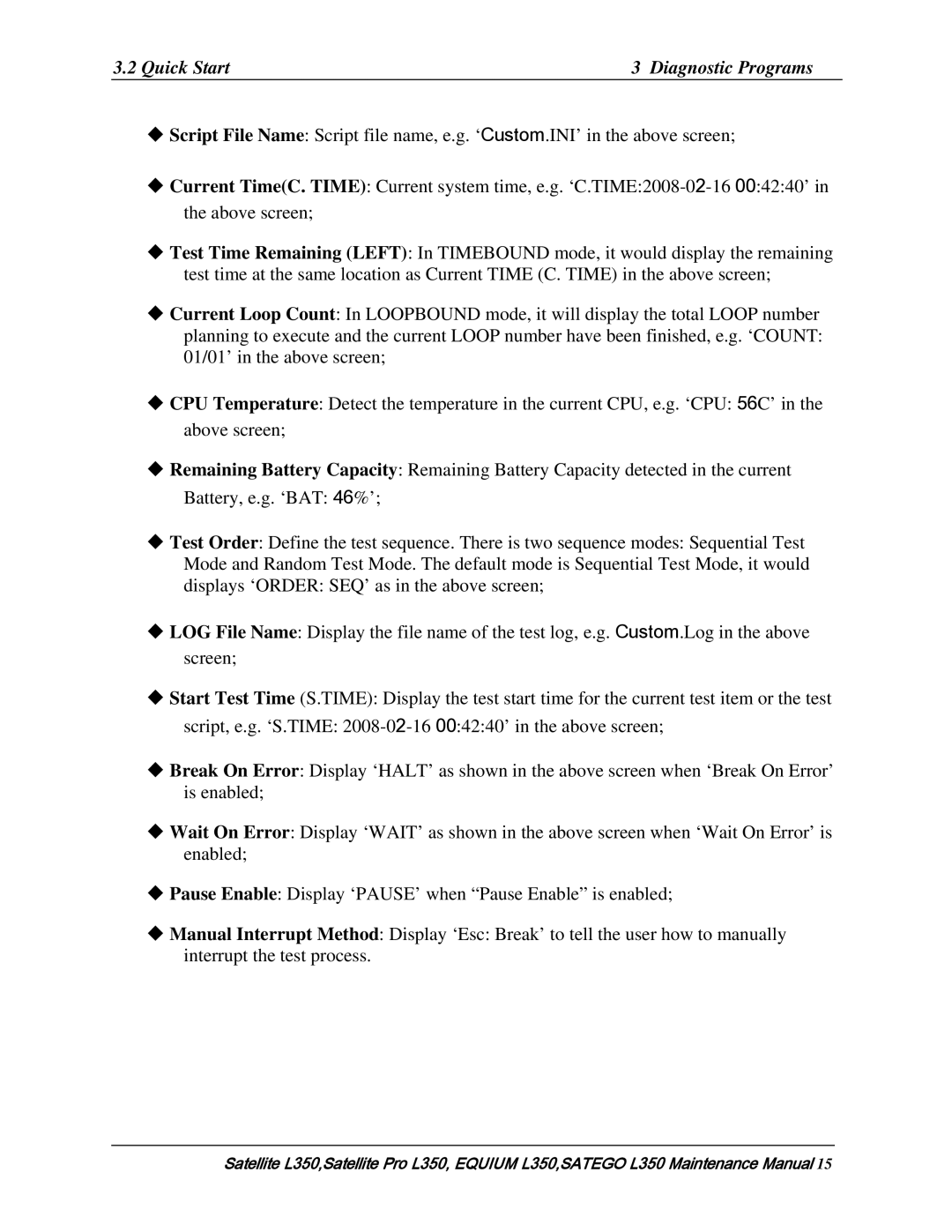3.2 Quick Start | 3 Diagnostic Programs |
Script File Name: Script file name, e.g. ‘Custom.INI’ in the above screen;
Current Time(C. TIME): Current system time, e.g.
Test Time Remaining (LEFT): In TIMEBOUND mode, it would display the remaining test time at the same location as Current TIME (C. TIME) in the above screen;
Current Loop Count: In LOOPBOUND mode, it will display the total LOOP number planning to execute and the current LOOP number have been finished, e.g. ‘COUNT: 01/01’ in the above screen;
CPU Temperature: Detect the temperature in the current CPU, e.g. ‘CPU: 56C’ in the above screen;
Remaining Battery Capacity: Remaining Battery Capacity detected in the current Battery, e.g. ‘BAT: 46%’;
Test Order: Define the test sequence. There is two sequence modes: Sequential Test Mode and Random Test Mode. The default mode is Sequential Test Mode, it would displays ‘ORDER: SEQ’ as in the above screen;
LOG File Name: Display the file name of the test log, e.g. Custom.Log in the above screen;
Start Test Time (S.TIME): Display the test start time for the current test item or the test script, e.g. ‘S.TIME:
Break On Error: Display ‘HALT’ as shown in the above screen when ‘Break On Error’ is enabled;
Wait On Error: Display ‘WAIT’ as shown in the above screen when ‘Wait On Error’ is enabled;
Pause Enable: Display ‘PAUSE’ when “Pause Enable” is enabled;
Manual Interrupt Method: Display ‘Esc: Break’ to tell the user how to manually interrupt the test process.
Satellite L350,Satellite Pro L350, EQUIUM L350,SATEGO L350 Maintenance Manual 15
